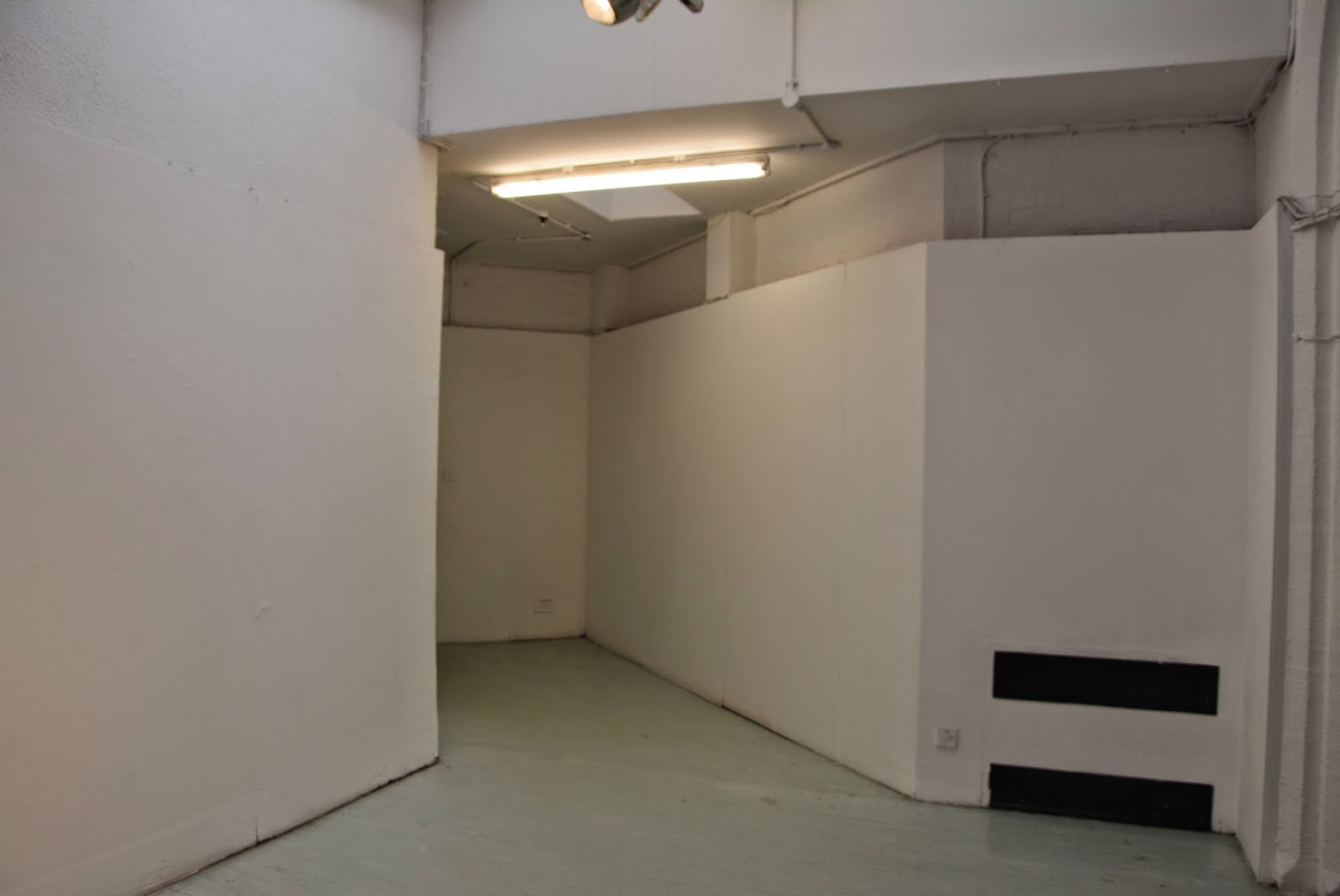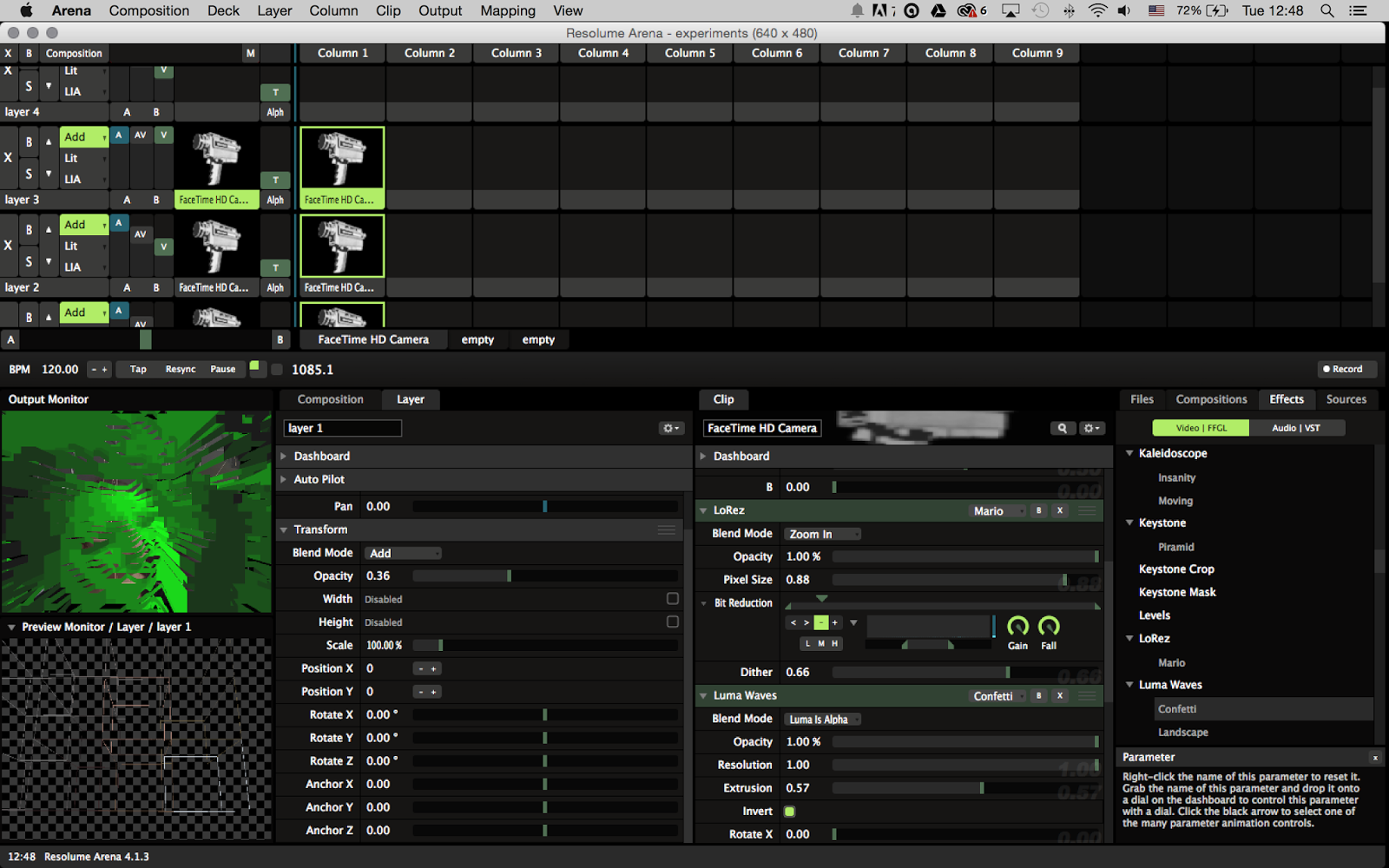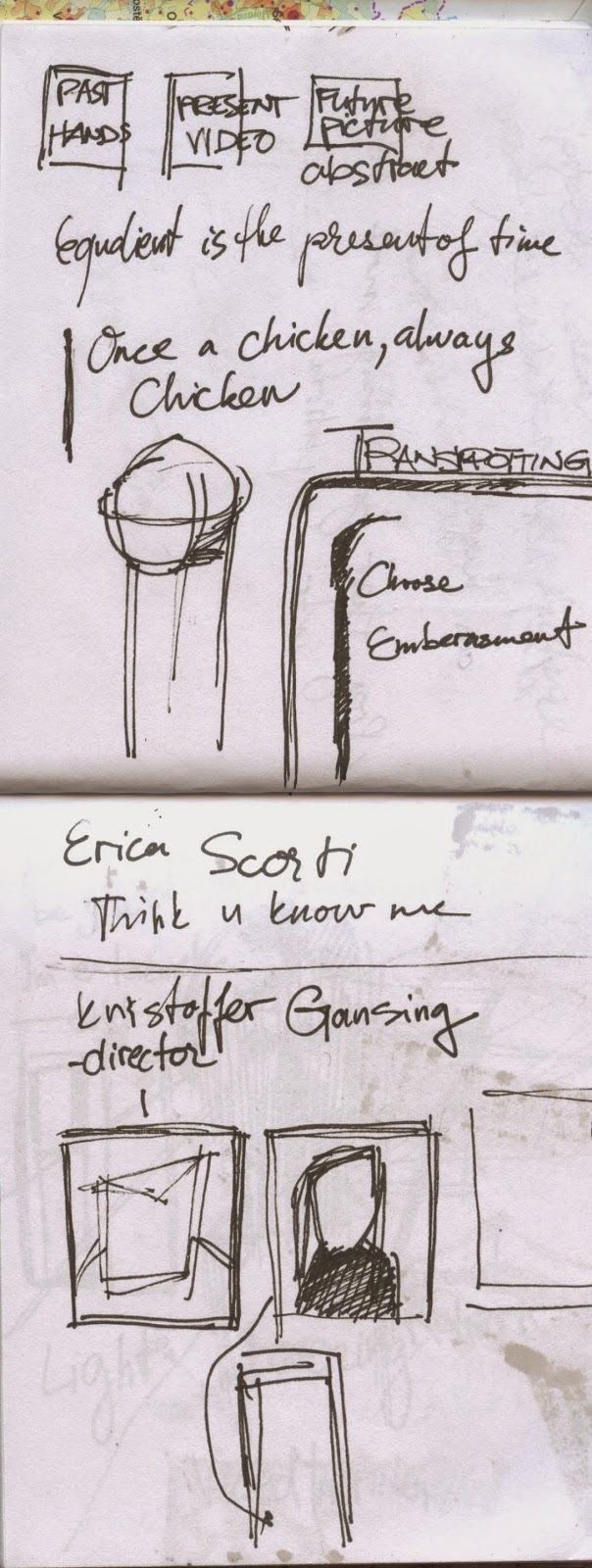Since our topic is about building where we have studio I had to create and think about the history of the building. On the one hand it is interesting
How the building changed from the children
hospital to art school building, on the other hand it is difficult to start
think about the old building and create something scary and stick too much to
the history because I don’t like to think about history and ghost too much
which I assume this building is full of stories.
PAST - PRESENT, REALITY - FUTURE
And back again!
I decided to use the idea of changing past
and present to the future, which I cant, be sure what I would like to do or how
other building will change.
Since I already use video mapping software
and I also used microphone for controlling opacity and scale I decided to use
same software, and probably pureData.
RESEARCH ABOUT BUILDING
I tried find as much I can however; there wasnt so much information about the building so I tried to find more information in old newspapers and there is also a lot information at Mitchell Library Archive which is open till 4pm every day so I hope I still have time go there and find more information.
After first experiments with projectors I found out how shadows are important and how much it is means to me. For my video installastion or videomapping project shadows are very meaningful element = future, past, present. It could be represent as past mistakes, achievements or relevant story behind to the building as well as presence and we leave our shadows behind us when we make a step forward.
The Dispensary, West Graham Street
On 1 October 1888, the Glasgow Hospital for Sick Children opened an out-door (meaning outside the hospital, rather than in the open air) Dispensary in West Graham Street, Cowcaddens, to provide free medical treatment and medicines to deserving poor children. The directors and medical staff wanted to treat as many children as possible without them being admitted to hospital, unless they were serious cases. They were also concerned that children were dying, or becoming incapacitated, from preventable causes, and that early treatment could alleviate this situation.
When the Hospital was originally planned, the directors intended that there would be a dispensary, but there had been insufficient funds to carry this out. The money was subsequently raised by Her Grace the Duchess of Montrose and members of the Ladies Committee who held a five-day 'Fancy Fair' at St Andrew's Halls in Glasgow in November 1884. It was a grand affair, with 17 stalls organised by 'great county ladies', selling expensive articles, fine art, antiques, jewellery, pottery, plants and soft furnishings. The ladies raised more than £15,000 and gave nearly £4,000 of this to build the Dispensary, the remainder of the money being invested.
Mr Whitelaw, a former chairman of the Hospital, and Mr Thomas Carlile, the current chairman, visited the main dispensaries in Britain before taking any decisions on the design and facilitities to be offered in the new building. Architect, James Sellars, was commissioned to design the Dispensary, which would provide a dispensing room, a large waiting hall, consulting rooms for physicians and surgeons and an isolation room for any infectious cases. Upstairs there was a ladies' workroom and living accommodation for the two sisters, the caretaker and his wife.
In 1897, a nurses' home and lecture theatre were added to the building and the interior layout of the Dispensary was changed.
The Dispensary was open for the reception and treatment of patients every day except Sunday, from 10 to 11. No subscriber's line1 was required - 'it is enough that the child is sick and poor'.
Around 150 patients were seen every morning by the Dispensary Physicians and Surgeons. An aorist, optician and dentist were also on the staff for consultations when required. Urgent and serious cases would be transferred to the Hospital for in-patient care, or placed on the waiting list for an available place. Medical students also attended to gain practical experience of children's diseases.
In 1889, its first full year of operation, the Dispensary saw 4,167 patients, who made 16,206 total attendances (nearly four visits per patient). By 1914 the figures had increased to 13,391 cases treated over 43,935 attendances.
In the annual report for 1909, there is the following description of the type of cases treated: '[In the medical department] 25 per cent were treated for various forms of disease of the lungs, chiefly Bronchitis, Pneumonia, Phthisis, and Pleurisy; and 26 per cent for derangements of the organs of nutrition, such as Diarrhoea, Gastric and Intestinal Catarrh, Debility, Atrophy, and Dyspepsia. In the special departments it may be noted that 227 cases of affections of the Eye, 168 of the Teeth, and 76 of the Ear were treated.'
Day surgery was also carried out at the Dispensary, particularly for tonsils, hernias and cleft palates. Over 2,000 operations were carried out under anaesthetic each year. Dr James H Nicoll, a Dispensary Surgeon from 1894 to 1914 and Professor of Surgery at Anderson's College, was a pioneer of day surgery. Between 1899 and 1908 he performed over 7,000 operations for conditions as diverse as tubercular joint disease, talipes, hare lip, cleft palate, mastoiditis, hernia and spina bifida. In 1899 he successfully operated on a six week old infant who had pyloric stenosis (BMJ 1900,ii, 591-593).
The nurses provided electric battery and massage therapy, while an X-ray machine (the gift of Dr William J Fleming) was installed in 1901 to aid diagnosis. Dr John Gilchrist was appointed the Honorary Medical Electrician to take charge of the apparatus.
Fully-trained nurses staffed the Dispensary. In 1909 there it employed two sisters and two nurses and later, as the workload increased, probationers were drasfted in to ease the workload.
In the afternoons, the Dispensary Sisters made home visits to patients to provide continuing care, particularly to see that the Doctor's orders were carried out, and that surgical dressings were properly applied. They also gave health, hygiene and nutrition advice and were authorised by the Ladies Committee to assist the poorer cases with milk, beef-tea, and surgical appliances. However, no case was relieved without investigation being made by the Charity Organisation Society.
Between 1888 and 1918 the sisters visited 17,171 surgical and medical cases and made a total of 38,432 visits.The Sisters did the work of an Almoner (medical social worker) until 1915 when a hospital Almoner was appointed.
Sister Laura M Smith was Sister in Charge of the Dispensary from 1892-1922.
In 1911 she cooperated in the establishment of The Sister Laura's Infant Food Co Ltd, which marketed a proprietary infant food based on a recipe she had used at the Dispensary for years. She was reprimanded by the RHSC directors for becoming involved with the company and for using the name of the RHSC in the advertising, but did not lose her job.
Most years, at Christmas, children attending the Dispensary were entertained to a special tea, entertainment and a visit from Santa, organised by the Ladies' Committee.
When the RHSC moved to Yorkhill in 1914, an out-patient department opened in the new hospital, but the West Graham Street unit continued to provide services to poor children. The work of the two units grew steadily, reaching a peak of 102,466 attendances in 1933. During the 1920s and 1930s the work of the Dispensary diversified to include physiotherapy, a department for skin diseases and a speech clinic.
In Jan 1953 the Dispensary and the hospital out-patient joined together in a new Out-Patient Department at Yorkhill. The Dispensary closed and the building was thereafter used by the clinical physics and bio-engineering department of the Western Regional Hospital Board. The building (without the nurses' home extension) is still extant, now used by Glasgow School of Art
from (http://www.hharp.org/library/glasgow/general/dispensary.html)
NEWSPAPERS
Barnes Building
UK children hospital (poor)
1909 - 25% different form of lungs disease - bronchitis, pneumonia, phthisis, pleurisy
26% derangements of the organs of nutrition - diarrhoea, gastic intestinal catarrh, debility, at rophy dyspepsia
227 - affections of eye
DR. J.M.A Lenihan Ph.D
Sir Hector Clare Cameron (1843-1928) KT, CBE, MD, LLD (St Andrews; Glasgow), PRFPS
Hector Cameron was born in Demerara (now Guyana) the second son of a sugar planter, Donald Cameron. He was educated at Madras College, St Andrews, Scotland; and then went on to the University where he studied Arts. He moved to Edinburgh to begin his medical education, but undertook the majority of his medical studies at Glasgow, where he gained his MB/CM in 1866 and his MD in 1888.
In 1868, Cameron was appointed house surgeon and then assistant to Joseph Lister at Glasgow Royal Infirmary.This was the period when Lister's work on aseptic techniques was beginning to make great changes to surgical practice. Cameron was firmly convinced of the value of Lister's approach and although others in Glasgow and in Britain generally were slow to accept the new practice, it was widely received in Europe.
By 1873 Cameron was appointed as visiting surgeon at the Royal Infirmary and he continued in that post until 1881 when he moved across town to become a "chief" (visiting surgeon) in the Western Infirmary.
Hector Cameron's influence spread from his early accomplishments in the Western infirmary. On the retirement of Professor George Buchanan in 1900 he was appointed to the Chair in Clinical Surgery at Glasgow University, a post he held until 1910. He held other University posts including: Dean of the Faculties, member of the Court and member of the Senate, and distinguished himself in these positions. His work received formal recognition, most notably when he was knighted by Queen Victoria in 1900. The Universities of Glasgow and St Andrews both conferred honorary LLD degrees on Cameron and he received the CBE in 1920.
His surgical prowess was not in dispute and his character was such that he was widely in demand. Cameron held the post of President of the Faculty of Physicians and Surgeons of Glasgow from 1897 to 1900 - and for many years he was the Faculty's representative on the General Medical Council and was for years the Vice President of that body. After his death in 1928, the President of the General Medical Council (Sir Donald MacAllister) wrote a glowing report of the man and of his abilities, which was published in the British Medical Journal (1 December 1928 p1015-17) as part of an obituary.
!n 1882 Hector Cameron was one of the two surgeons appointed to the wards in the new Children's Hospital (the other being William Macewen). He retired from the Hospital 10 years later but the Board on accepting his resignation from clinical duties ask him to be the Vice-Chairman of the Board, a position he held until his terminal illness in 1928.
Cameron also held several civic positions, including Justice of the Peace for the County and City of Glasgow (from 1911) and Red Cross Commissioner for the West of Scotland during the First World War when he was charged with the supervision of auxiliary hospitals with almost 2000 beds.
Emeritus Professor Daniel G Young
PROJECT RESEARCH
WHAT IS REALITY?
BBC Horizon 2011 What is Reality
http://www.dailymotion.com/video/xkvoa0_bbc-horizon-2011-what-is-reality-hdtv_tech
PURE DATA
Realtime visual perfomance
http://thecreatorsproject.vice.com/blog/creating-real-time-visualizations-with-pure-data
information about visual in puredata
https://puredata.info/community/conventions/convention09/ortiz.pdf
PUREDATA MASK
ONION LAB
videomapping
http://www.onionlab.com/
THE MACULA
videomapping
http://themacula.com/
https://www.youtube.com/watch?v=pdfEIWqlLno
maxin10sity
the projection mapping company
http://www.maxin10sity.net/
LIGHT INSTALLATION
https://www.flickr.com/photos/hcgilje/15362226827/in/photostream/
WHAT IS REALITY?
BBC Horizon 2011 What is Reality
http://www.dailymotion.com/video/xkvoa0_bbc-horizon-2011-what-is-reality-hdtv_tech
PURE DATA
Realtime visual perfomance
http://thecreatorsproject.vice.com/blog/creating-real-time-visualizations-with-pure-data
information about visual in puredata
https://puredata.info/community/conventions/convention09/ortiz.pdf
PUREDATA MASK
ONION LAB
videomapping
http://www.onionlab.com/
THE MACULA
videomapping
http://themacula.com/
https://www.youtube.com/watch?v=pdfEIWqlLno
maxin10sity
the projection mapping company
http://www.maxin10sity.net/
LIGHT INSTALLATION
https://www.flickr.com/photos/hcgilje/15362226827/in/photostream/
Atom™ & Robin Fox
"Double Vision" (excerpt)
http://robinfox.com.au/about/The Making of Double Vision by Atom TM & Robin Fox from Unsound Festival on Vimeo.
Freya Björg olafson
Freya Björg olafson
Làslò Moholy Nagy
herbert bayer diagram of the field of vision
"should not retain its distance from spectator, it should be brought close to him, penetrate and leave an impression on him, should explain, should demonstarate, and even persuade and lead him to a planned and direct reaction. Therefore we may say that exhibition design runs parallel with the psychology of advertising. "
ROBERT WILSON
JOSEF SVOBODA - LATERNA MAGIKA -
BRAIN SYSTEM - VIDEO MAPPING - installation
work what I done before
work what I done before
more infromation - http://kakaucka.eu/?p=16
THESIS, PHOLOSPHERS
Byung-Chul Han - Key note at Transmediale about transparency and new technologies in our lives
Peder Anker - graphic language environment history
X - SCREEN - Film installation and Actions in the 1960s and 1970s
"One key difficulty lies on the inherently ephemeral nature of such practices, which makes them structurally incompatible with conventional forms of documentation."
"Work in film is no longer restricted to photographic representation on a single screen, but inculudes projections of light, shadow, play, actions front of the screen, the extension of projection into the whole space and even installations within that space where is no film at all. The medium, in short, is being explored as a visual system."
"moveable walls lettered with new slogans, rotating color filters, ight projections: transparency, light and movement all in the sevice of the public"
"Vortex is a new from of theater based on the combination of electronics, optics and architecture.[... ]Vortex are sound, light, color and movement in their most comprehensive theatrical expression. These audio-visual combinations are presented in a circular, [...]"
SPACE
1) Door to the studio -
2) Window - REALLY
3) Corridor
4) Top Window - Barnes lecture theatre
EXPERIMENTS - DEVELOPTMENT

SPACE
1) Door to the studio -
2) Window - REALLY
3) Corridor
4) Barnes Lecture Theatre
4) Top Window - Barnes lecture theatre
EXPERIMENTS - DEVELOPTMENT
DAY 2,3 - Getting into the core and Puredata sound trigger -
PUREDATA SOUND AND MIDI TO RESOLUME
Because I never used processing before I decided to use pure data
for midi and sound triggering and changing the visual part of my project. Even
though there is a little chance to learn Proccesing in two days or so but in
general, I am not so good in programming so there wont be a big point to ask
Paul to write for me something, however; I know what I will do during the break
between term 2 and term 3... (Get into the Proccesing...)
Although, I knew Puredata before but still there is so much stuff
to explore so on the on hand I’m quite happy to use it - not so much because
sometime it is very noisy and my ears just exploding from the noise!!
TRANSPARENCY
After transmediale, for me it is difficult to think about new
technologies in a good way because there is so much disadvantages and problems
behind, I should be able to know about all these problems behind but more I
start think about them more I feel desperate and I don’t want to use social
networks anymore or change reality into the virtual...
Past and future into a virtual meaningless visual interpretation
because history and story telling is much more colorful than just some
data...
Fear of transparency...
Sketchbook work






















































.png)

.png)

.png)

.png)

.png)


.png)

.png)

.png)

.png)

.png)

.png)

.png)

.png)

.png)

.png)



.png)
.png)






.png)
.png)

.png)
.png)
.png)
.png)
.png)
.png)
.png)
.png)
.png)





































